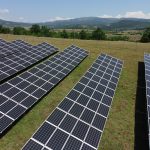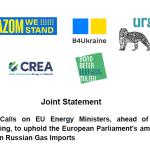This letter was written in response to the open position of CEOs of the European steel industry on 28 May 2017.
To the Heads of State and governments of the European Union,
Your decisions on the EU Emission Trading Scheme (ETS) will determine whether the reform will deliver some much needed improvements for the EU’s carbon market or whether it will impede the Union’s future efforts to curb carbon emissions in a cost-effective way.
In order for the EU ETS to become a relevant motor of decarbonisation, excess allowances have to be deleted permanently and freely allocated allowances need to be targeted as much as possible. This is the only way to make sure that the European carbon price, currently at around EUR 5/tCO2, starts rising to levels which generate large scale low-carbon investments. This is also underlined by today’s report of the High-Level Commission on Carbon Prices which states that a carbon price of at least US$40–80 (EUR 35–70)/tCO2 by 2020 and US$50–100 (EUR 45–90)/tCO2 by 2030 is necessary to drive a decarbonisation consistent with the Paris Agreement temperature target[1].
In response to the open letter from the European steel industry and the sector’s concerns articulated therein, Climate Action Network (CAN) Europe urges you to reconsider some of their arguments in more detail.
The steel and iron sectors already benefit largely from protection against the risk of carbon leakage in the current trading period of the EU ETS. In the period 2008-2015 they generated windfall profits from overallocated free allowances amounting to a total of EUR 8.4 billion[2], a stark contradiction to the EU ETS’s objective to stimulate industrial abatement under the polluter-pays principle.
Even without considering the waste gas amendment supported by the steel industry’s letter, the current reform proposals will increase free allocation to the iron and steel sector even further from Phase III to Phase IV[3], which repudiates the principle of a decreasing cap. In 2015 already, the Court of Justice of the EU upheld the current allocation levels and the current non-allocation to waste gas emissions[4].
The current benchmark flat reductions are crucial to allow for incremental improvements over time. To put the current proposals into perspective, the reduction of 0.25% as proposed by the European Parliament implies a 400 years long decarbonisation trajectory[5].
Thank you for your consideration.
[1] Carbon Pricing Leadership Coalition/World Bank Group (2017). Report of the High-Level Commission on Carbon Prices.
[2] Carbon Market Watch (2016). November study: Industry windfall profits from Europe’s carbon market 2008-2015: How energy-intensive companies cash on their pollution at taxpayers’ expenses.
[3] Sandbag (2017). Response to EUROFER’s press release on the Environment Council’s ETS Reform position.
[4] CJEU judgment C-180/15: “In the light of all the foregoing considerations, the answer to the eighth question is that Article 10a(1) and (4) of Directive 2003/87 and Article 10(3) of Decision 2011/278 must be interpreted as permitting the non-allocation of additional free allowances for emissions related to the production of measurable heat by burning waste gases generated by a hot metal benchmark installation, when the amount of allowances determined based on the heat benchmark is lower than the median annual historical emissions related to the production of that heat”.
[5] Sandbag (2017). A fact check on ETS reform claims. What does ETS reform really mean for steel, cement and ceramics?



